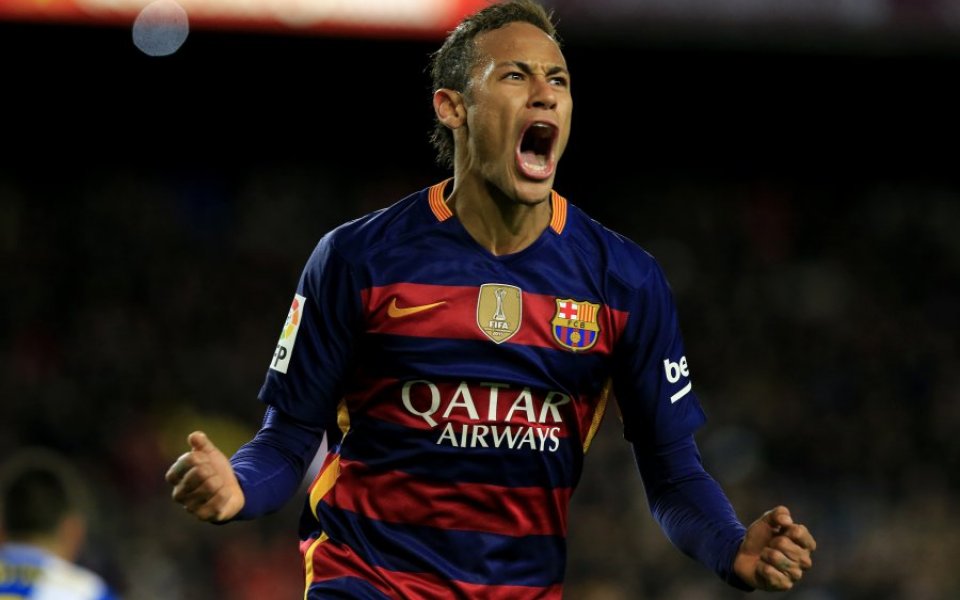How much are Neymar and Gareth Bale worth? Investment bank Cantor Fitzgerald believes it has the definitive answer on player values

Football clubs have been urged to shut out the noise and defer to statistical analysis sourced from the City, during another high-spending January transfer window. Premier League clubs surpassed £1bn in total transfer spend for the first time in 2015 and invested another £175m last month. With such increasingly huge sums at stake, club owners are now being offered advice on how much a potential signing is worth from the corporate world as well as the training ground.
Investment bank Cantor Fitzgerald’s sports finance group is currently offering such guidance to top clubs – it says it has already had discussions with some – after developing a model it believes can help clubs more accurately determine the worth of their playing assets or potential targets.
Headed by former Everton commercial director James Powell, who has also advised on football club takeovers, the group has launched its Player Valuation Model which it hopes club owners will use for objective analysis of a player’s worth.
Using reams of performance data, Cantor’s model works out each player’s contribution to key events on the pitch that either lead to a goal being scored or a goal being conceded. That is then used to devise a player’s “clean” or “intrinsic” value, in the words of Powell, free of subjective opinion that can skew the market.
[infographic id="546"]
“It’s trying to reduce the amount of subjectivity involved. It’s trying to avoid the mistakes that can be made,” Powell told City A.M. “It essentially shows what a player’s contribution is to winning football matches. It takes out all the other noise and helps you to make a really educated decision, to understand what a player actually contributes in real terms.”
Take Southampton’s recent acquisition of goalscorer Charlie Austin for £4m from Queens Park Rangers. According to Cantor’s model, the Saints have scored a coup in snapping up a player whose “clean intrinsic” value is £10.34m.
Of course, QPR were faced with the prospect of Austin walking away for nothing once his contract expired in the summer while Southampton may have been concerned with the striker’s injury record, two factors that may have driven his market value down. Yet as Southampton quickly discovered following Austin’s match-winning goal at Old Trafford last week, the English striker makes a significant contribution to his club winning matches – the key metric in Cantor’s valuation. Another example of market value potentially not aligning with the model is Neymar, touted as a target for Manchester United and even Real Madrid, who are said to be ready to pay €190m (£144.4m) for the Brazilian – well over double the £61.7m he is valued at by Cantor.
Also included in reports are other “value scenarios” such as how a change in the player’s injury and appearance record would affect his value, as well as a comparison of a player’s performance plotted against those in similar positions in his current league and others.
[infographic id="548"]
For example, while vaunted 18-year-old Benfica prospect Renato Sanches is valued at just £6.8m by the model, Cantor’s report on the player could show a significant increase in his value once he gets more first-team minutes under his belt.
United have also been linked with Sanches, who possesses dazzling skills and has scored eye-catching goals, but Powell warns that such distinctiveness can lead to a player being over-valued – something he hopes his model can alleviate.
“There is a danger that your eyes can be deceptive occasionally,” says Powell. “He [Sanches] has certainly scored some eye-catching goals, but do these always lead to his team winning football matches? How might he fare in other leagues?
“There are many examples of clubs taking an expensive ‘punt’ on a very young player in the hope that he will be the next big thing, but then losing a significant amount of money when they trade him away two years later.”
Similarly, the Player Valuation Model is being touted as a way for prospective buyers of football clubs to gain a better understanding of the playing assets owned by their would-be purchase.
[infographic id="552"]
This season American investors have bought into Premier League clubs such as Bournemouth and Crystal Palace and as the corporate world takes an increased interest in the Premier League’s booming broadcast revenues, Powell believes the demand for objective analysis of a squad’s ability and value will follow suit.
“On the balance sheet a lot of clubs will just put in the price they’ve paid for a player which could have been zero if the player came through the academy,” he says.
“I think that buying and selling football clubs traditionally has been almost at the opposite end of the spectrum to buying a petrochemical company. You would not buy a petrochemical company in the way football clubs have been sold and bought in recent years. It needs to have a more corporate approach.”